 February 25, 2021 John E. Ross, KD8IDJ, Editor
| ||||||
ARRL CEO David Minster, NA2AA, to Keynote QSO Today Virtual Ham Expo ARRL CEO David Minster, NA2AA, will keynote the QSO Today Virtual Ham Expo March 13 - 14 weekend. Minster's talk -- part of an 80+ speaker lineup -- will begin at 2000 UTC (3 PM EST) on March 13. His appearance will highlight ARRL's featured role at the expo, which will also include "Ask The ARRL Lab." ARRL is a QSO Today Virtual Minster, who assumed the ARRL Headquarters leadership position last September, has launched major projects and assembled teams to foster innovation and individual skill development in radio technology and communications. In his keynote, Minster will share his enthusiasm for advancing amateur radio and highlight current ARRL initiatives to engage and inspire the current generation of hams. His presentation topics will include:
The ARRL expo booth will feature "Ask The ARRL Lab," where Lab staffers will answer questions live. Attendees can come into the booth lounge and ask the Lab's technical wizards for tips about projects or QSO Today Virtual Ham Expo Chairman Eric Guth, 4Z1UG, also announced four live group kit-building workshops. Workshop instructors will guide participants through building a variety of kits, which will be available for purchase and delivered prior to the expo so attendees can build them at home. Early-bird discount tickets and links to purchase kits can be found at the QSO Today Expo website. Read an expanded version. ARES and Red Cross Cooperate to Assist Storm-Affected Residents in Texas ARRL Amateur Radio Emergency Service (ARES®) and American Red Cross volunteers joined forces in Texas under the ARRL/Red Cross memorandum of understanding in responding to the situation resulting from unseasonably frigid weather. Kevin McCoy, KF5FUZ, said the Red Cross formally requested an ARES activation in Texas to address the effects of the natural disaster, which included a lack of drinking "We made a special effort to use Winlink email over radio to get reports of infrastructure problems and unmet needs [and to] communicate information about warming centers," McCoy said, adding that Winlink operators provided the most valuable contribution in the disaster response. Several teams deployed to support emergency operations centers (EOCs) in Bexar, Brazos, Kerr, Travis, and Williamson counties, he added. "Our effort in the start of the activity was to focus on folks with medical needs who required power, and to get those folks to safety," McCoy said. "Reports from operators were passed to Disaster Program
Managers and Disaster Action Teams and to Red Cross Disaster Mental Health personnel for evaluation. Government partners and citizens provided transportation and Red Cross provided hotel rooms in areas with reliable power to keep these citizens safe while following COVID-19 protocols." On February 20, the Red Cross made a formal stand-down request to Texas ARES sections from the Central and South Texas Red Cross Region. "Transportation, communication, and internet had restored sufficiently to allow for that change of status," McCoy said. "We did let all Winlink operators know that we would still monitor the tactical addresses until the disaster recovery was over." Key issues remaining include the prolonged power outage and the freezing weather that left Texas with damaged water infrastructure. "Things are improving rapidly," McCoy said on February 22. Read an expanded version. ARRL Podcasts Schedule
The latest edition of Eclectic Tech (Episode 28) features a discussion on grabbing NOAA weather The On the Air and Eclectic Tech podcasts are sponsored by Icom. Both podcasts are available on iTunes (iOS) and Stitcher (Android), as well as on Blubrry -- On the Air | Eclectic Tech. "Whirlwind Boom" Emergency Communications Exercise Set The amateur radio communications team of Florida Baptist Disaster Relief has created a multi-site radio communications exercise dubbed "Whirlwind Boom," designed to bring together volunteers and local agencies across northern Florida and throughout the southeastern US. The 2-hour drill is set for Friday, March 19. Invitations have gone out to Amateur Radio Emergency Service (ARES®) groups, county-level emergency managers, state The exercise scenario involves a swarm of tornadoes coupled with the terrorist bombing of the telephone system, and large numbers of displaced residents seeking shelter. Only radio remains. During the exercise, volunteers will practice transmitting formal reports about the utility, water, and safety situations in their counties (Incident Action Plan). Many participants will communicate using portable radio gear powered by battery or generator. Simulated outbound survivor messages to friends and family will also be sent. Participating groups will receive secret messages advising them of unexpected handicaps that mimic what might happen during an actual disaster -- complicating their tasks. These exercises are structured in accordance with Department of Homeland Security training guidelines. For more information, contact Gordon Gibby, KX4Z. Read an expanded version. Amateur Radio Helping to Fill Earthquake Report "Donut Holes" An article describing how radio amateurs can help fill the information "donut hole" by providing post-earthquake "Did You Feel It" (DYFI) reports via Winlink HF radio email appeared on February 22 in the American Geophysical Union (AGU) magazine Eos. As the article points out, "Ham radio networks gear up to provide real-time, on-the- As the article explains, DYFI uses a questionnaire to gather individuals' experiences and observations, and USGS uses the information to evaluate the shaking intensity at that person's location. DYFI has been in operation since 1999 in the US and 15 years around the world, during which the USGS has gathered more than 5 million individual DYFI intensity reports. The article notes that a potential problem is that "public access to it may be compromised as a result of strong earthquake shaking," with affected individuals experiencing power and communication outages or may be distracted by more immediate priorities. "USGS and other global seismic network operators have witnessed felt report 'donut holes' in areas of strong shaking due to loss of internet communication," the article said, "most recently during the magnitude-5.7 earthquake that hit near Salt Lake City in March 2020." The article suggested that "alternative pathways" of communication are needed to "gather important ground-truth shaking data with minimal delay." And "We now expect to sample the donut hole with the help of amateur radio groups worldwide," the article's authors said. "These groups can mobilize a significant number of licensed radio operators after a strong earthquake, especially near large population centers, ensuring a baseline level of macroseismic intensity reporting even in heavily affected areas." As the article explains, USGS has partnered with Winlink, a radio email platform with more than 28,000 users worldwide, and with ARRL Amateur Radio Emergency Service (ARES®) members. Winlink adapted the USGS DYFI questionnaire to its platform, and this version is now available to all radio amateurs, the article said. Read an expanded version. ARRL Learning Network Webinars Visit the ARRL Learning Network (a members-only benefit) to register, check on upcoming webinars, and to view previously recorded sessions. Talking to Astronauts: An Elementary School's Exciting ARISS Experience -- Diane Warner, KE8HLD This is a story about Tallmadge Elementary School's participation in a once-in-a-lifetime Amateur Radio on the International Space Station (ARISS) school contact. The excitement of the entire experience was shared not just by the students, but included faculty, parents, Tuesday, March 2, 2021 @ 1 PM EST (1800 UTC) Technicians: Life Beyond Repeaters -- Anthony Luscre, K8ZT This presentation takes a new look at the possibilities available to Technician-class operators beyond repeaters. Explore Tech HF and 6-meter privileges for SSB, CW, and digital modes such as FT8, RTTY, and PSK31 to expand your operating modes and your station's outreach. Explore other VHF/UHF uses, including SSB, satellites, FM simplex, digital modes, contesting, and more. Tuesday, March 9, 2021 @ 1 PM EST (1800 UTC) The Art and Science of Operating Ultra-Portable -- Mike Molina, KN6EZE Whether for SOTA, POTA, backcountry survival, or just spending time in nature, learning how to operate ultra-portable is a fun and rewarding experience. In this presentation, Mike, KN6EZE, will cover the basics of ultra-portable operating for both the new and experienced ham radio operator. Tuesday, April 6, 2021 @ 8 PM EDT (0000 UTC on Friday, April 7) The ARRL Learning Network schedule is subject to change. Announcements: February 25
Amateur Radio in the News ARRL Public Information Officers, Coordinators, and many other member-volunteers help keep amateur radio and ARRL in the news. Share any amateur radio media hits you spot with us.
Hams Participate in Winter Yellowstone VHF Radio Rally Wyoming and southern Montana hams belonging to the North Yellowstone Amateur Radio Club and Park County (Montana) Amateur Radio Emergency Service (ARES®) took to the wilderness in late January during heavy snow to take part in an emergency preparedness exercise. The groups have about 15 members in all; many more bison and elk roam the roads than do hams. The critical winter duty for North Yellowstone radio amateurs is
deployment to remote locations of winter emergencies. To train for these responses, the members devised the VHF Radio Relay, a radio scavenger hunt designed to get members out to remote road locations where winter emergencies may require radio communications support. The group uses the Eagle's Nest repeater located at 8,000 feet on Electric Peak southwest of Gardiner, Montana -- the north entrance to Yellowstone National Park. The repeater covers the northern one-third of the vast park and southern half of Park County, Montana. Participants received two pages of instructions. The first contained directions for completing their call-out assignment and listed 15 locations that required hams to deploy to the far reaches of the radio coverage area. The second page consisted of a map. Only three roads are in the area, and conditions on one dirt road are typically difficult. Each route had five locations along the way to the terminal checkpoint. The 15 widely spaced locations guaranteed that no operator could visit all of them. Locations were chosen such that hams needed to plan their route strategy -- ideally before leaving the starting point, where odometer readings were recorded.
Each location was assigned a tactical call sign, and communicators had to use GPS to verify that they were in their precise positions. At all locations, hams radioed net control to have their location verified before moving to the next location. At the last check-in point, participating hams had to call in and were given instructions on how to find a code word hidden in an interpretive sign to verify their location -- for example, the seventh word in the third paragraph -- and relay it to net control. Each participant had a different code word. Directions included a safety warning about bison and elk on the road, and bad driving conditions due to snow. All departed at 9 AM and were to be back at the starting point at 11:30 AM. A prize was awarded to the ham who visited the most locations with the lowest mileage. First place went to Doug MacCartney, K7GRZ, and second place to Reve Carberry, KX4LZ. Jim Halfpenny, K9YNP, served as net control. -- Thanks to Park County Emergency Coordinator and ARRL PIO Jim Halfpenny, K9YNP ARRL Interview Explains Background of Ham Radio in Space Film Short Josh Tanner, the Australian filmmaker who produced the thriller Decommissioned by Perception Pictures, has explained how he came up with the idea to develop the movie short. In the approximately 6-minute film, SuitSat returns in the future to haunt International Space Station commander "Diaz," played by Joey Vieira, who spots SuitSat, the surplus Russian Orlan spacesuit that Amateur Radio on the An exclusive ARRL video interview premiering on Saturday, February 27, brings together Tanner, who directed the sci-fi horror film about an eerie ham-radio-in-space reencounter, and ARISS-International Chair Frank Bauer, KA3HDO. In the interview, conducted by ARRL volunteer Josh Nass, KI6NAZ, of the popular YouTube channel Ham Radio Crash Course, Tanner described the uniquely creative and technical aspects of the filmmaking involved in Decommissioned and its connection with the real-life SuitSat-1. "My wife, Jade, who is also a co-writer of this short film, and I are both really obsessed with space, and we discovered SuitSat on SuitSat-1 transmitted a voice message, "This is SuitSat-1 RS0RS!", in several languages, plus telemetry and a slow-scan TV image on an 8-minute cycle as it orbited Earth. Tanner said a lot of the films he produces involve "pieces of history that are rather quite odd or interesting that maybe a lot of people don't know about." Bauer described the background of the 2006 SuitSat project, which involved ARISS's relationship with Sergey Samburov, RV3DR. "We had 3 weeks to pull it all together and get it ready for launch," Bauer said, and that included getting safety approvals. SuitSat-1 operated for about 2 weeks, and a contest of sorts evolved to guess when it would burn up in the atmosphere, which wasn't until about 6 months later. A SuitSat-2 was launched from the ISS several years later. Tanner said the Decommissioned script was written about 3 years ago, but creating the realistic atmosphere and sets involved a number of complexities, which was "very expensive," he revealed. A big push toward using video game engine technology in feature-film development made it possible. Decommissioned was produced using a game engine called Unreal Engine, which was also used to produce the TV show The Mandalorian.
ARRL reminds interested schools and educational organizations in the US that the latest window to submit proposals to host scheduled ham radio contacts with an ISS crew member opened on February 15. Contacts would be scheduled January 1 - June 30, 2022. Proposals are due to ARISS by 0759 UTC on April 1. In the US, ARRL is a partner in the ARISS program, along with AMSAT, NASA, and the ISS National Lab, which has kept amateur radio on the air from the International Space Station for 20 years. In Brief...
The K7RA Solar Update Tad Cook, K7RA, Seattle, reports: Sunspots have returned, and solar activity increased on every day over this reporting week. The average daily sunspot number shot up from zero to 19.6, while the average daily solar flux rose from 72 to 75.7. Geomagnetic activity was also higher, with average daily planetary A index increasing from 7.7 to 16, and average daily mid-latitude A index rose from 5.6 to 12.4. Predicted solar flux for the next 30 days is 82 on February 25 - 28; 78 Predicted planetary A index is 12 on February 25; 5 on February 26 - March 1; 15 and 12 on March 2 - 3; 5 on March 4 - 5; 15 on March 6; 5 on March 7 - 11; 15, 10, and 5 on March 12 - 14; 15, 5, 8, and 18 on March 15 - 18; 20 on March 19 - 20; 10 and 8 on March 21 - 22, and 5 on March 23 - 26. Geomagnetic activity is expected to increase by March 28. Sunspot numbers for February 18 through 24 were 12, 12, 12, 11, 26, 31, and 33, with a mean of 19.6. The 10.7-centimeter flux was 71.1, 72.9, 76.4, 75.3, 75.9, 78.1, and 80.5, with a mean of 75.7. Estimated planetary A indices were 5, 17, 20, 20, 17, 12, and 21, with a mean of 16. Middle latitude A index was 2, 13, 15, 18, 13, 10, and 16, with a mean of 12.4. A comprehensive K7RA Solar Update is posted Fridays on the ARRL website. For more information concerning radio propagation, visit the ARRL Technical Information Service, read "What the Numbers Mean...," and check out K9LA's Propagation Page. A propagation bulletin archive is available. For customizable propagation charts, visit the VOACAP Online for Ham Radio website. Share your reports and observations. Just Ahead in Radiosport
Upcoming ARRL Section, State, and Division Conventions Many conventions and hamfests have been canceled or postponed due to the coronavirus pandemic. Check the calendar of canceled events on the ARRL website.
Find conventions and hamfests in your area.
ARRL -- Your One-Stop Resource for . .
Subscribe to...
Free of charge to ARRL members...
| ||||||
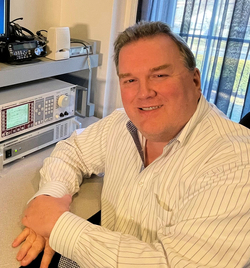 Ham Expo Partner.
Ham Expo Partner.
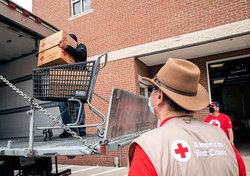 water, power outages, fuel shortages, and frozen plumbing. Red Cross in Central Texas supported more than 60 warming shelters at the request of governmental agencies.
water, power outages, fuel shortages, and frozen plumbing. Red Cross in Central Texas supported more than 60 warming shelters at the request of governmental agencies.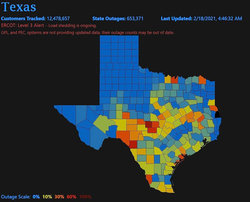
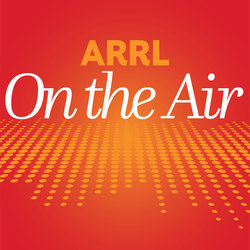 The latest episode of the On the Air podcast (Episode 14) takes a deeper dive into the subject of HF antenna tuners, including some shopping tips.
The latest episode of the On the Air podcast (Episode 14) takes a deeper dive into the subject of HF antenna tuners, including some shopping tips. satellite images at 137 MHz and a chat with Nigel Vander Houwen, K7NVH, about how he has combined rockets and high-altitude ballooning with amateur radio.
satellite images at 137 MHz and a chat with Nigel Vander Houwen, K7NVH, about how he has combined rockets and high-altitude ballooning with amateur radio.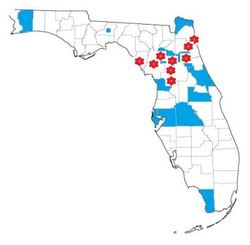 communications experts, and federal
communications experts, and federal 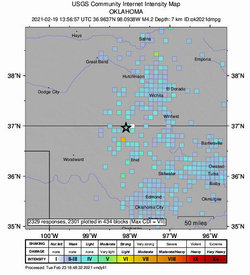 ground information about earthquake shaking and damage when other communication pathways are knocked out of commission." Authors of the article were David J. Wald of the US Geological Survey (USGS), Vincent Quitoriano, and Oliver Dully, K6OLI.
ground information about earthquake shaking and damage when other communication pathways are knocked out of commission." Authors of the article were David J. Wald of the US Geological Survey (USGS), Vincent Quitoriano, and Oliver Dully, K6OLI. this is where amateur radio groups come into play.
this is where amateur radio groups come into play. the community, and local amateur radio operators. You will also learn how to begin the process of submitting your own ARISS contact proposal.
the community, and local amateur radio operators. You will also learn how to begin the process of submitting your own ARISS contact proposal. The
The 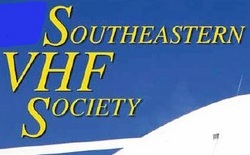 The 2021 Southeastern VHF Society Conference scheduled to be held in April has been canceled due to the pandemic. The Southeastern VHF Society Board of Directors will consider alternative solutions for future conferences. SVHFS has published the
The 2021 Southeastern VHF Society Conference scheduled to be held in April has been canceled due to the pandemic. The Southeastern VHF Society Board of Directors will consider alternative solutions for future conferences. SVHFS has published the 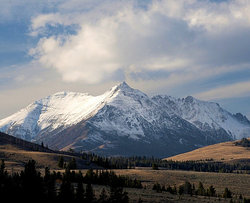
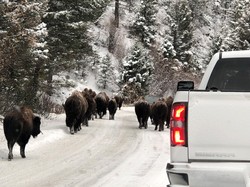
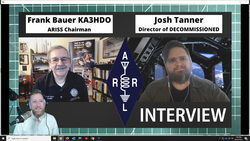 International Space Station (
International Space Station (.JPG) Wikipedia," Tanner said in the interview. "It was an initial sort of two-pronged reaction. One, this is genius. It's amazing that they did this; I'd never heard this before. And the second one was, this is kinda creepy...that they had what looks like a stranded, dead astronaut floating around the Earth...and there were voices of children being transmitted from it."
Wikipedia," Tanner said in the interview. "It was an initial sort of two-pronged reaction. One, this is genius. It's amazing that they did this; I'd never heard this before. And the second one was, this is kinda creepy...that they had what looks like a stranded, dead astronaut floating around the Earth...and there were voices of children being transmitted from it.".jpg) Samburov was "the initial brainchild" behind the SuitSat-1 concept, and ARISS ran with it, Bauer recounted.
Samburov was "the initial brainchild" behind the SuitSat-1 concept, and ARISS ran with it, Bauer recounted.
-logo-with-legend.jpg) Plans remain up in the air for the Youth on the Air (
Plans remain up in the air for the Youth on the Air ( Former ARRL Teachers Institute instructor Miguel Enriquez, KD7RPP, of Tucson, Arizona, died on February 7 as a result of COVID-19. His death came just 3 weeks after that of his wife, Wendy, also a COVID-19 victim. Miguel was 72 years old. His wife was 68. Between 2001 and 2008, Miguel Enriquez taught sessions of the introductory TI-1 course in Arizona. A February 14 Arizona Daily Star
Former ARRL Teachers Institute instructor Miguel Enriquez, KD7RPP, of Tucson, Arizona, died on February 7 as a result of COVID-19. His death came just 3 weeks after that of his wife, Wendy, also a COVID-19 victim. Miguel was 72 years old. His wife was 68. Between 2001 and 2008, Miguel Enriquez taught sessions of the introductory TI-1 course in Arizona. A February 14 Arizona Daily Star 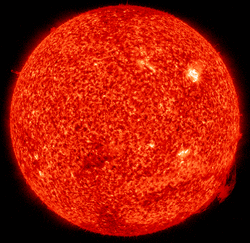 on March 1; 74 on March 2 - 4; 73 on March 5 - 6; 74, 70, 74, and 76 on March 7 - 10; 72, 71, 72, and 70 on March 11 - 14; 71, 72, 71, 73, 76, and 75 on March 15 - 20; 72 on March 21 - 22; 76 on March 23 - 24, and 74 and 73 on March 25 - 26.
on March 1; 74 on March 2 - 4; 73 on March 5 - 6; 74, 70, 74, and 76 on March 7 - 10; 72, 71, 72, and 70 on March 11 - 14; 71, 72, 71, 73, 76, and 75 on March 15 - 20; 72 on March 21 - 22; 76 on March 23 - 24, and 74 and 73 on March 25 - 26.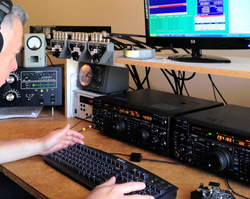 March 1 -- K1USN Slow Speed Test (CW, 20 WPM max)
March 1 -- K1USN Slow Speed Test (CW, 20 WPM max).jpg)








